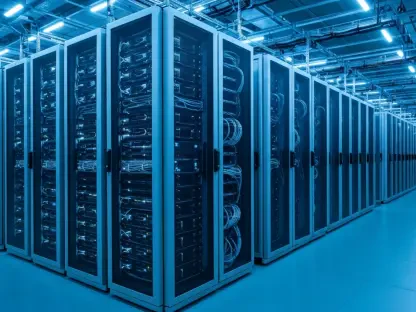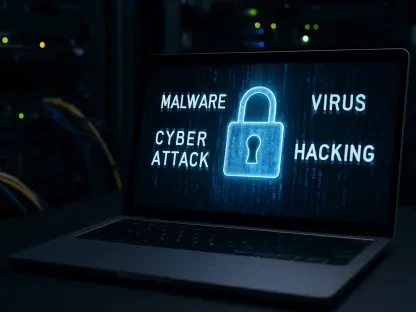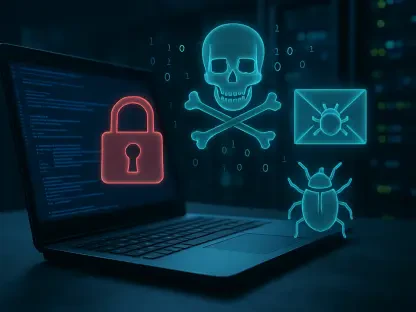As government operations increasingly pivot toward digital solutions, the urgency for fortified cross-domain network security has never been more pressing. The evolving landscape of cyber threats highlights the critical necessity of a secure, unified security framework to protect these essential operations. With cyber threats becoming more sophisticated and pervasive, the stakes for government agencies continue to rise. Effective measures must be implemented to secure sensitive data and maintain the integrity of government networks.
Rising Cyber Threats in Government Operations
The digital transformation across government agencies has led to an expanded risk profile for cyber threats. During fiscal year 2023, U.S. federal agencies reported over 32,200 information security incidents, resulting in substantial financial burdens for investigation and remediation. The financial repercussions are staggering, with these incidents collectively costing billions of dollars. The Ponemon Institute conducted an analysis revealing that the average expense linked to each data breach increased to $4.88 million in 2024, signifying a 10% rise from the prior year.
As digital solutions and data workloads proliferate across on-premises and multi-cloud environments, the opportunities for cyber threats multiply. This expansion not only complicates security protocols but also makes it easier for threats to penetrate and exploit vulnerabilities. Cisco’s Talos Threat Intelligence Group provided data showing a substantial increase in Common Vulnerabilities and Exposures (CVEs) from 29,166 cases in 2023 to 40,289 in 2024. These statistics underscore the escalating challenges that government agencies face in safeguarding their operations against increasingly sophisticated and frequent cyber-attacks.
The Shift Toward Security Service Edge (SSE)
In light of these growing hazards, traditional isolated security tools reveal significant shortcomings. They often lack the comprehensive visibility necessary across an entire network and demand extensive maintenance resources. This inefficiency underlines the need for more integrated solutions that can offer robust security with streamlined management. The Security Service Edge (SSE) emerges as a modern, effective solution. It consolidates multiple security technologies into a single, cloud-based architecture, enhancing security measures while simplifying the management process.
Federal and state agencies have made considerable progress in boosting their zero-trust security posture over the past few years. However, maintaining an integrated security platform that provides holistic visibility and control remains crucial in the face of escalating cyber threats. The SSE framework offers a unified solution capable of securing user access to applications and resources across various environments and scenarios. As cybersecurity demands evolve, the role of SSE in safeguarding government data systems becomes increasingly indispensable.
The Promise of Converged Solutions: SSE and SASE
The modern approach to converged solutions combines SSE with Software-Defined Wide Area Network (SD-WAN), resulting in the Secure Access Service Edge (SASE). This technology is projected to experience substantial growth, with Gartner forecasting an annual increase of over 30% until 2027. The integrated nature of SASE allows for more streamlined security measures, addressing various security needs through a single solution. A recent survey from IDC revealed a strong preference among buyers, with 84.7% favoring a unified SSE/SASE solution from a single vendor.
This overwhelming preference underscores the value of comprehensive, consolidated solutions in the cybersecurity landscape. Cisco’s SSE/SASE solutions, authorized under the Federal Risk and Authorization Management Program (FedRAMP), have gained notable traction among governmental agencies. These solutions are specifically tailored to meet the unique requirements of government operations, providing integrative capabilities that ensure robust security. By adopting Cisco’s advanced offerings, government agencies can effectively mitigate risks and enhance their cybersecurity posture.
Key Features of Cisco’s SSE Solutions
Cisco’s SSE solutions are equipped with critical capabilities designed to address the unique challenges faced by government entities. One of the standout features is Secure Internet Access, encompassing a Secure Internet Gateway (SIG) and a cloud-delivered firewall. This setup includes advanced threat prevention functionalities such as the Snort 3.0 Intrusion Prevention System (IPS), Cloud Access Security Broker (CASB), and Data Loss Prevention (DLP). These tools work together to provide end-to-end protection, ensuring the integrity and security of internet access.
Another integral component is Secure Private Access, which combines Zero Trust Network Access (ZTNA) and VPN-as-a-Service (VPNaaS). Managed from a single console, this approach ensures stringent user authentication and proactive threat interception. Cisco’s solution simplifies the management of security protocols while maintaining a high level of protection. By continuously monitoring network traffic for malicious activity and intercepting threats before they can impact user systems or applications, Cisco’s SSE solutions offer a comprehensive security approach.
Cisco’s Legacy and Commitment to Cybersecurity
Jeff Scheaffer, vice president of Cisco SSE Product Management, emphasized the importance of resilience and accessibility in cybersecurity. With nearly 40 years of experience empowering government agencies to tackle unique security and compliance challenges, Cisco’s deep insight into emerging threats enables them to provide effective, robust security solutions. The resilience and accessibility offered by Cisco’s cloud-based security solutions are crucial in helping agencies maintain operational flexibility and defend against evolving cyber threats.
Cisco’s SSE solutions are designed for cloud-native operations, which simplifies backend security management while ensuring a seamless and transparent user experience. These integrative tools enhance the flexibility and security of government agencies, allowing them to adapt to changing needs and threats. Cisco’s long-standing relationship with government entities and commitment to cybersecurity positions them as a reliable partner in safeguarding sensitive information and maintaining robust security measures.
Comprehensive Suite of Cisco Tools
As government operations increasingly embrace digital solutions, the need for robust cross-domain network security becomes ever more urgent. The constantly changing landscape of cyber threats underscores the critical necessity of maintaining a secure and unified security framework to safeguard these crucial operations. With cyber threats growing more sophisticated and omnipresent, the stakes for government entities have never been higher. It is imperative to implement effective measures to protect sensitive information and ensure the integrity of government networks.
The surge in digital initiatives across government departments necessitates a comprehensive approach to cybersecurity. By adopting a robust security framework, government agencies can defend against unauthorized access, data breaches, and other malicious activities. It’s not just about preventing attacks but also about ensuring the continuity and reliability of essential services. Advanced persistent threats, ransomware, and phishing attacks pose significant risks that can disrupt crucial functions and compromise national security. Therefore, a multi-layered defense strategy and constant vigilance are essential.









